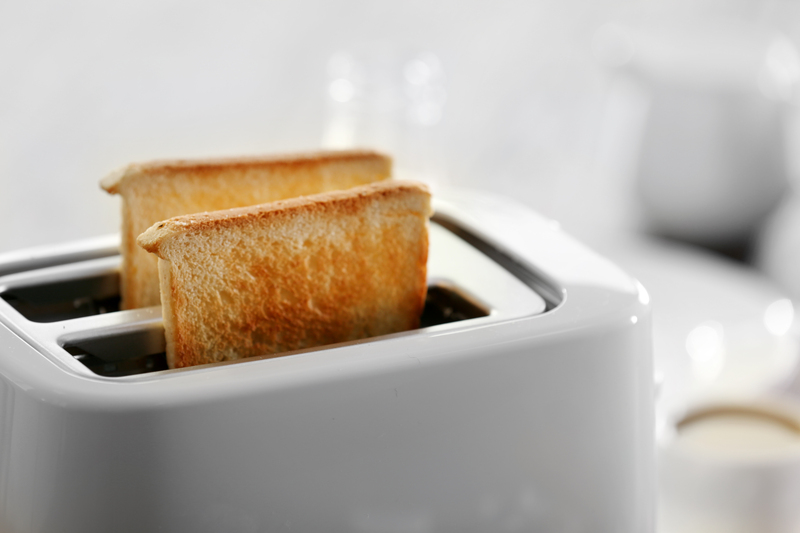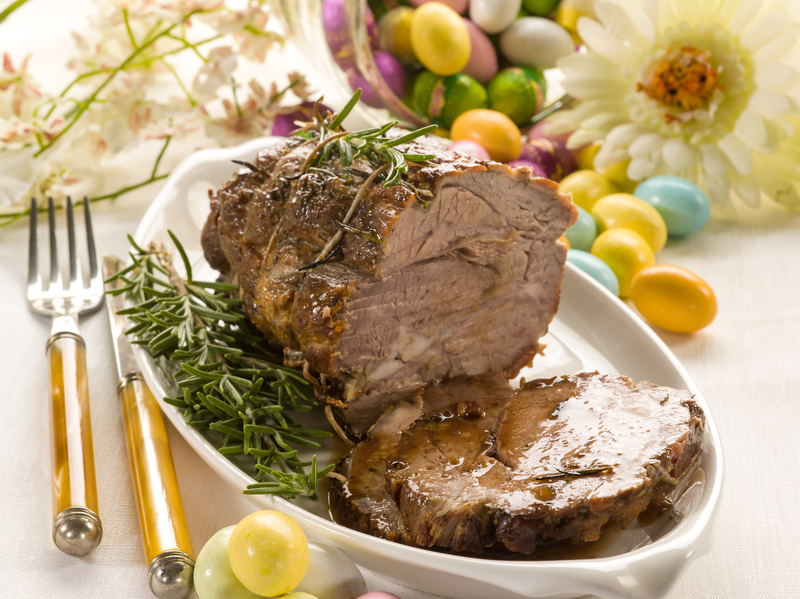The Ultimate Handbook for Cleaning Persistent Stovetop Burnt Residue
Posted on 14/09/2025
The Ultimate Handbook for Cleaning Persistent Stovetop Burnt Residue
If you cook regularly, you've likely faced the frustrating challenge of removing stubborn, burnt-on residue from your stovetop. Grease splatters, boiled-over sauces, and accidental spills can leave tough burnt marks that seem impossible to clean. Don't worry--our comprehensive guide will teach you everything you need to know about cleaning persistent stovetop burnt residue and restoring your kitchen's shine.
Understanding What Causes Stovetop Burnt Residue
Before diving into cleaning techniques, it's essential to understand the common causes of burnt-on residue on stovetops. Knowing what leads to these tough stains can help you prevent them in the future:
- Sugar Spills: Spilled sugary substances like syrups or jams can become caramelized and bond stubbornly to your stovetop.
- High Heat Cooking: Overheating pots and pans often leads to food spills that instantly burn and adhere to the surface.
- Grease Splatters: Frequent frying causes grease to splatter and bake onto the stovetop, especially if not cleaned right away.
- Lack of Regular Cleaning: Regular minor spills can accumulate over time if ignored, making them more challenging to remove.

The Importance of Prompt Cleaning
Addressing stovetop burnt stains promptly is crucial for several reasons:
- Maintains the visual appeal of your kitchen
- Prevents permanent surface damage
- Reduces risk of cross-contamination and odors
Procrastination makes burnt stovetop residue harder to remove. Cleaning right away ensures easier maintenance and a healthier cooking space.
Essential Tools and Supplies for Cleaning Burnt Stovetop Residue
Before tackling the cleaning process, gather the following supplies:
- Non-abrasive sponges or microfiber cloths
- Plastic or silicone scrapers
- Baking soda & distilled white vinegar
- Lemon juice
- Dish soap
- Commercial stove cleaners (optional, for tough stains)
- Rubber gloves for hand protection
Avoid steel wool and harsh scouring pads to prevent scratching modern stovetop surfaces, especially for glass, ceramic, or induction models.
Step-by-Step Guide: Cleaning Persistent Burnt-On Stovetop Residue
1. Let the Stove Cool Completely
Safety first! Always ensure your stovetop is cool to the touch before cleaning burnt on residue. This prevents burns and avoids damaging your cleaning tools.
2. Remove Loose Debris
Start by taking off any removable grates, burner caps, or drip pans. Wipe away loose, burnt food particles with a damp cloth.
3. Soak Removable Parts
Place grates, caps, and pans in a basin of hot, soapy water for at least 30 minutes. This softens caked-on grime. For extra cleaning power, add a spoonful of vinegar or baking soda.
4. Apply a Baking Soda Paste
While your parts soak, create a baking soda paste by mixing three parts baking soda to one part water. Apply generously to stubborn burnt residue, especially on glass or ceramic stovetops.
- Spread the paste in a thick layer over the burn marks.
- Let it sit for 15-30 minutes to help break down residue naturally.
5. Scrub Gently with the Right Tools
- Use a non-abrasive sponge to rub the area in small, circular motions.
- Plastic scraper: For really tough, stuck-on residue, gently maneuver a plastic scraper under the edges to lift away burnt patches without scratching the stovetop surface.
6. Tackle Persistent Stovetop Burnt Residue with Vinegar
White vinegar is excellent for degreasing and breaking down mineral deposits. Spray undiluted vinegar directly onto the burnt spots:
- Let the vinegar soak for 10-15 minutes.
- Wipe clean with a damp microfiber cloth.
This method is especially effective on glass, enamel, and stainless steel stove surfaces.
7. Try Lemon Juice for Stubborn Spots
Acidic lemon juice helps dissolve residual grime and leaves your kitchen smelling fresh. Apply fresh lemon juice to challenging spots and allow it to sit for 10-15 minutes before scrubbing and rinsing.
8. Addressing Metal Coil Burners
- Unplug coil burners before cleaning.
- Wipe with a damp cloth dipped in vinegar for burnt food residue.
- Do not submerge electric components in water.
9. Rinse and Dry Thoroughly
After all visible residue is removed:
- Wipe with a clean, damp cloth to remove any cleaning solution.
- Buff dry with a microfiber towel for streak-free shine.
10. Reassemble and Polish
Rinse and dry all removable parts. Place them back on the stovetop. For an extra polish (especially for stainless steel or glass top stoves), use a dedicated stovetop cleaner or a touch of olive oil on a cloth to add gleam.
Special Considerations by Stovetop Type
Glass and Ceramic Stovetops
- Use only non-scratch sponges and plastic scrapers.
- Specialized glass stove top cleaners can be applied for additional tough stains.
- Buff with a dry microfiber cloth to avoid streaks after cleaning.
Gas Stovetops
- Clean burners and grates separately.
- Ensure ports are not clogged before reassembly.
- Burner caps may be soaked in soapy water and scrubbed with a brush.
Induction Stovetops
- Wipe gently with minimal pressure to protect the sensitive surface.
- Use specialized induction-safe cleaners for best results.
Troubleshooting: How to Remove Extremely Stubborn, Burnt-On Residue
1. Multiple Rounds of Baking Soda Paste
If residue persists, repeat the baking soda application and let it sit overnight. The longer exposure helps break down burnt material more effectively.
2. Light Abrasive Pads (As a Last Resort)
For old, tough spots, you may use a white Scotch-Brite(TM) pad (which is safer than green pads) on metal stovetops. Test in an inconspicuous area first to check for scratches.
3. Use Commercial Cleaners
Products formulated for burnt stovetop residue--such as Bar Keepers Friend(TM) or Weiman(R)--can offer additional cleaning power. Always check the label to ensure compatibility with your stove's surface.
4. Steam Cleaning
For a chemical-free option, use a handheld steam cleaner to loosen burnt food. Softened grime can then be wiped away with a cloth.
5. When to Call a Professional
If burnt stains cover a wide area or you're unsure about damaging sensitive finishes, call a specialist in appliance cleaning. This prevents voiding warranties or causing costly damage.
Pro Tips for Preventing Stubborn Burnt Residue on Stovetops
- Wipe up spills immediately after the stove cools, before they harden.
- Use burner liners (if permitted by your stove manufacturer) to catch drips and overflows.
- Clean with a damp cloth after each meal prep to prevent build-up.
- Regularly deep clean your stovetop (at least once a week or as needed).
- Avoid high heat when possible to reduce chances of food scorching onto surfaces.
Homemade vs. Commercial Cleaners: Which Is Best for Burnt Residue?
Homemade Cleaners
- Environmentally friendly and non-toxic
- Readily available in most homes
- Safe for most stovetop materials when used correctly
- Examples: vinegar, baking soda, and lemon juice
Commercial Cleaners
- More powerful against long-standing or extremely stubborn burnt spots
- Convenient and time-saving
- Some contain chemicals--follow all safety guidelines and ventilation recommendations.
- Always check for compatibility with your stove's finish to avoid damage.
Blending Both Approaches
The most effective stovetop cleaning strategies often combine homemade solutions with targeted commercial products for persistent residue.
Safety Precautions When Cleaning Your Stovetop
- Unplug or turn off the appliance before cleaning electric or induction cooktops.
- Ventilate the kitchen to avoid inhaling fumes from cleaning solutions.
- Wear rubber gloves to protect your hands from harsh cleaners and hot water.
- Never mix ammonia and bleach--this creates toxic fumes.

Frequently Asked Questions about Cleaning Burnt-On Stovetops
How often should I deep clean my stovetop?
To prevent the buildup of stubborn burnt-on residue, deep clean your stovetop at least once a week, or more often if you cook daily or experience frequent spills.
Is baking soda safe for all stovetop surfaces?
Baking soda is gentle and non-abrasive, making it safe for most stove surfaces including glass, ceramic, enamel, and stainless steel. Always use a soft sponge or cloth to avoid scratching.
Can I use a razor blade to scrape burnt residue?
Razor blades can be used carefully on glass stovetops, but only at a sharp, low angle to avoid scratching. Never use on ceramic, enamel, or induction surfaces.
How can I prevent persistent burnt residue from forming?
Implement a regular cleaning routine, wipe spills promptly, and use cookware of the right size for burners. This significantly reduces the risk of burnt-on, persistent stovetop residue.
Final Thoughts: Achieve a Sparkling Clean Stovetop Every Time
Cleaning persistent, burnt-on stovetop residue doesn't have to feel overwhelming or impossible. With the right tools, techniques, and a little elbow grease, you can keep your stovetop looking like new. Prioritize swift cleanup, use the step-by-step methods shared in this handbook, and set a schedule for routine maintenance. Not only will your kitchen look more inviting, but you'll also extend the life of your appliance and enjoy a safer cooking environment.
So, the next time you encounter stubborn burnt residue on your stovetop, refer to this ultimate guide and reclaim your kitchen's sparkle and shine!




